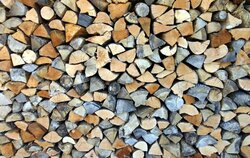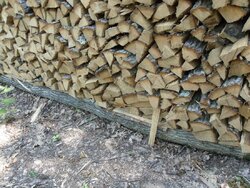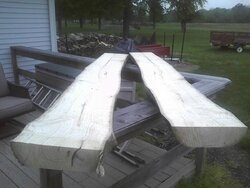I have a large stack of kindling ready for next winter. It is all oak which we split with a log splitter. Ave size is about 2" x 1-1/2" x 16".
I am getting a new wood stove this year and have been reading on how to start a fire. Many of the posts refer to "splits", but I'm not sure what they are and what size they should be.
Can someone explain what they are and best way to make them; or refer me to a website that covers this.
Thanks in advance,
Pete
I am getting a new wood stove this year and have been reading on how to start a fire. Many of the posts refer to "splits", but I'm not sure what they are and what size they should be.
Can someone explain what they are and best way to make them; or refer me to a website that covers this.
Thanks in advance,
Pete





